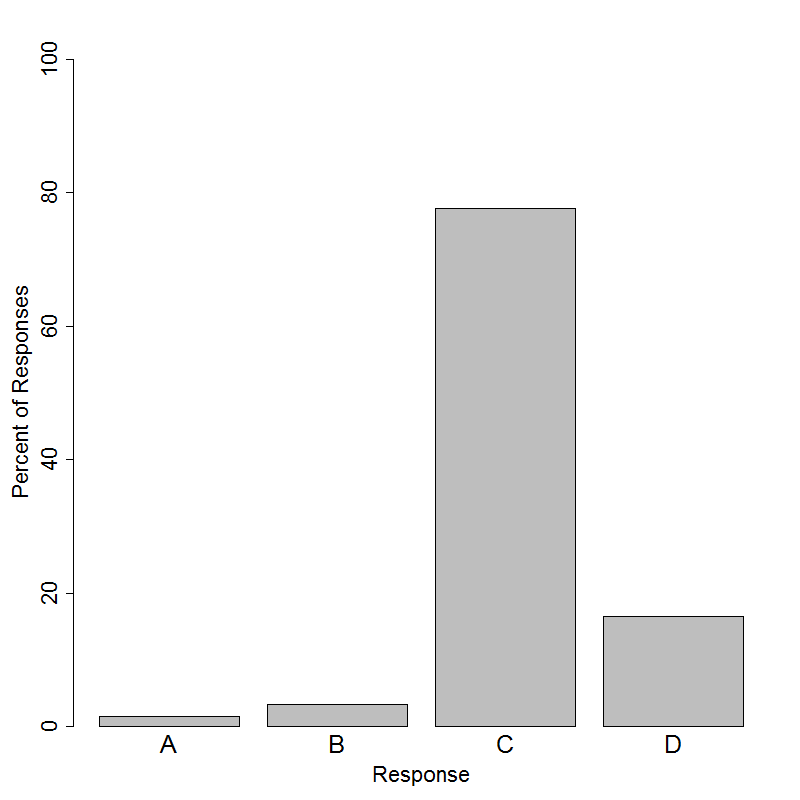An experiment was conducted to investigate whether warts can be removed better by using a freezing liquid or by using duct tape. One hundred people participated in the experiment with 50 receiving the freezing liquid and 50 receiving the duct tape on their warts. What should be recorded to compare one
treatment to the other?
(A) Amount of duct tape applied to the wart
(B) Amount of freezing liquid applied to the wart
(C) Presence or absence of the wart at the end of the experiment
(D) Size of the wart at the beginning of the experiment





The correct answer to this question was (C). Experiments where participants are randomly assigned to treatments are powerful statistical tools because they allow for causal claims to be made. In order for their potential to be realized, experiments must be carefully planned. One question that must be answered in the planning phase of an experiment is what is to be measured, i.e. what data should be collected? Failure to collect appropriate data may mean that the question that the experiment was conducted to answer may not be answerable at all.
The experiment in this question is being conducted to determine whether freezing liquid or duct tape is better for removing warts. Because the focus of the experiment is on the (complete) removal of warts, whether the wart is still present at the end of the experiment must be measured. There are many possible ways for recording this information, but these data must be collected to answer the question. The only answer choice that describes these data is (C), the “presence or absence of the wart at the end of the experiment.”
Of course, whether or not a wart is completely removed is not the only question that one may wish to answer when comparing freezing liquid and duct tape. Another reasonable experiment that may be conducted would be to see whether freezing liquid or duct tape was better at decreasing the size of warts - but this is a different statistical question. For this different experiment, other data must be collected. Not all warts are the same size, so the variable of interest would be the change in size of each wart. To determine this the wart’s size must be measured at both the beginning and end of the experiment. If the question were about this different experiment, option (D) would be one of the pieces of data that must be collected - but alone it is not enough. The amount of duct tape and freezing liquid applied (options (A) and (B)) may be practical concerns when designing an experiment, but they are not the outcome that must be measured to compare the treatments.